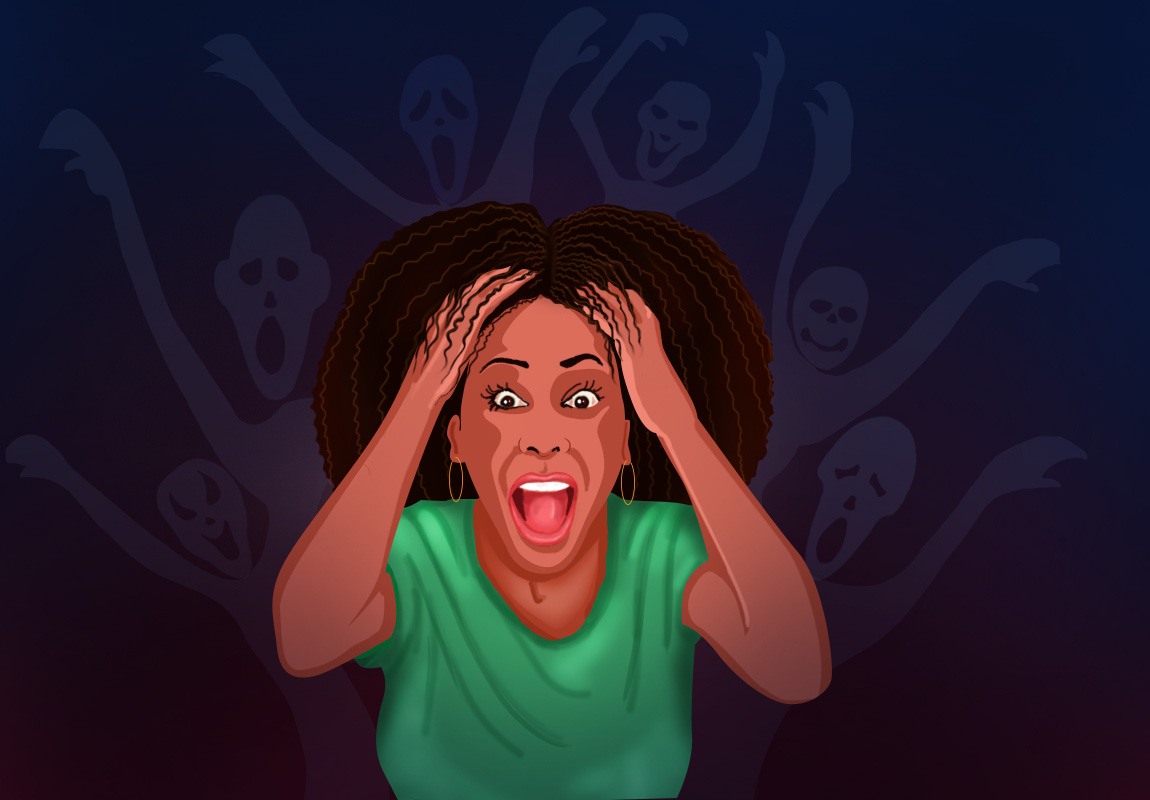Schizophrenia refers to both a single condition and a group of conditions classified as psychotic disorders. These are conditions in which a person feels a "disconnection" from reality which can manifest in a variety of ways.
Schizophrenia typically manifests itself at different ages depending on gender. It usually begins between the ages of 15 and 25 for men and between the ages of 25 and 35 for women. It also affects both men and women in equal numbers.
Schizophrenia in children, particularly before the age of 18 is possible, but uncommon. However, these are usually severe cases. Early onset is associated with a more severe, more difficult-to-treat condition.
Over 45-year-olds account for approximately 20% of new schizophrenia cases. These incidents are more common in women. Delusion symptoms are more severe in these cases, with less severe negative symptoms and effects on thinking and concentration.
Symptoms of Schizophrenia
According to DSM IV (TR), signs and symptoms of schizophrenia generally are divided into three categories — positive, negative and cognitive.
Positive Symptoms
Positive symptoms in schizophrenia reflect an excess or distortion of normal functions. Among the active, abnormal symptoms are:
Delusions or erroneous beliefs: These beliefs are not grounded in reality and usually involve a misunderstanding of perception or experience. They are the most prevalent schizophrenic symptoms.
Hallucination: Typically, hallucinations involve seeing or hearing things that do not exist, though hallucinations can occur in any sense. The most common hallucination in people with schizophrenia is hearing voices. These are referred to as auditory hallucinations.
Cognitive disorder: Difficulties speaking and organising thoughts may result in speech stopping mid-sentence or putting together meaningless words, a condition known as "word salad."
Disorganized behaviour can manifest itself in a variety of ways, ranging from childish silliness to unpredictable agitation.
Negative Signs and Symptoms
Negative symptoms are defined as a reduction or absence of normal function characteristics. They may appear months or years before the onset of positive symptoms. They include:
• Disinterest in daily activities
• The absence of emotion
• Reduced ability to plan and execute activities
• Improper personal hygiene
• Social isolation
• A lack of motivation
Cognitive Symptoms
Cognitive symptoms are issues with thought processes. Because they interfere with the ability to perform routine daily tasks, these symptoms may be the most disabling in schizophrenia. These symptoms may be present at birth in a person with schizophrenia, but they may worsen as the disorder progresses. They are as follows:
Difficulty paying attention
Problems with making sense of information
Memory problems
Affective Symptoms
Schizophrenia can also affect mood, resulting in depression or mood swings. Furthermore, people with schizophrenia frequently appear inappropriate and odd in their moods, causing others to avoid them, leading to social isolation. People suffering from schizophrenia are frequently unaware that their difficulties are the result of a mental illness that necessitates medical attention. As a result, it is usually up to family or friends to get them assistance.
Suicidal Thoughts
Suicidal thoughts and behaviour are common in people suffering from schizophrenia.
Seek immediate help if you suspect or know that a loved one is contemplating suicide. Consult a doctor, therapist, or other health care professional.
Common Symptoms
• Social withdrawal
• Flat, expressionless gaze
• Inappropriate laughter or crying
• Depression
• Insomnia or oversleeping
• Delusions
– Delusions of persecution
– Delusions of reference
– Delusions of grandeur
– Delusions of control
• Hallucinations
– Auditory hallucinations
– Visual hallucinations in some cases
• Disorganised speech
• Disorganised behaviour
• Clumsy in motor functions
• Rigidity, tremor, jerking arm movements, or involuntary movements of the limbs
• Awkward walking
• Unusual gestures and postures
• Inability to experience joy or pleasure from activities (called anhedonia)
• Appearing desireless or seeking nothing
• Feeling indifferent to important events
• Low motivation or No motivation
• Suicidal thoughts in some cases
• Rapidly changing mood
Types of Schizophrenia
The nature of symptoms taken into account while determining the disease of schizophrenia, varies greatly with the progression of the disease. There are 5 types of schizophrenia; the subtypes are defined in accordance with the most prominent characteristics. The same person may be analysed with different types of schizophrenia as the illness proceeds. The types of schizophrenia are:
i) Paranoid schizophrenia
The paranoid type of schizophrenia is distinguished by thoughts of conspiracy or persecution, as well as auditory hallucinations in some cases. The patients, on the other hand, are more capable of working and have better relationships than those with other types of schizophrenia. Life is much more normal, especially if the disease can be managed. Though the reason is unknown, it could be due to the fact that those suffering from this schizophrenic type begin to show symptoms later in life, and thus have already grasped better functioning before the illness could settle.
Signs and Symptoms
• Delusions of persecution, reference, exalted birth, special mission, bodily change, or jealousy.
• Hallucinatory voices that threaten the patient or give commands, or auditory hallucinations without verbal form, such as whistling, humming, or laughing.
• Hallucinations of smell or taste, or of sexual or other bodily sensations.
• Visual hallucinations may occur but are rarely predominant.
• Incoherent speech
• Marked loosening of associations
• Flat or grossly inappropriate affect
Causes
• Family history of schizophrenia
• Exposure to viruses while in the womb
• Poor nutrition while in the womb
• Stressful life events
• Older paternal age
• Addiction of psychoactive drugs during adolescence
ii) Disorganised schizophrenia (Hebephrenia)
It is distinguished by disorganised thought patterns and fewer delusion and hallucination difficulties. The ability to function normally in daily life may be severely hampered and may include difficulty performing routine tasks such as brushing, bathing etc.
This is one of the schizophrenia subtypes characterised by emotional impairment.
For example, the patient's emotions may be extremely volatile, or might be unjustified in a given situation, with unusual responses of feelings (flat or blunted affect). The patient is unusually ecstatic or jocular, such as one who laughs at a solemn occasion such as a funeral.
Communication ability may deteriorate, resulting in practically incomprehensible speech, as a result of disorganised thought patterns. It is critical to keep an eye out for speech characterised by difficulties in forming sentences with correct grammar, and word ordering is more difficult than articulation or enunciation problems.
Symptoms
• Delusions of persecution
• Delusion of reference, exalted birth, special mission, bodily change, or
jealousy;
• Hallucinatory voices that threaten the patient or give commands, or auditory
hallucinations without verbal form, such as whistling, humming, or laughing;
• Hallucinations of smell or taste, or of sexual or other bodily sensations;
visual hallucinations may occur but are rarely predominant.
iii) Catatonic schizophrenia
Catatonic disorders are a group of symptoms characterised by disturbances in motor (muscular movement) behaviour that can be psychological or physiological in nature. Immobility, which is a rigid positioning of the body held for an extended period of time, is the most well-known of these symptoms. Catatonic patients may maintain their body position for hours, days, weeks, or even months at a time. Catatonic symptoms can also appear as agitated, purposeless movements that appear to be unrelated to the person's surroundings. Catatonia is the medical term for this condition. Slower motor activity is a less severe symptom of catatonic disorder. A catatonic person's body position or posture is frequently unusual or inappropriate.
Symptoms
• Catalepsy, or motionlessness maintained over a long period of time.
• Catatonic excitement, marked by agitation and seemingly pointless
movement.
• Catatonic stupor, with markedly slowed motor activity, often to the point of immobility and seeming unawareness of the environment.
• Catatonic rigidity, in which the person assumes a rigid position and holds it against all efforts to move him or her.
• Catatonic posturing, in which the person assumes a bizarre or inappropriate posture and maintains it over a long period of time.
• Waxy flexibility, in which the limb or other body part of a catatonic person can be moved into another position that is then maintained. The body part feels to an observer as if it were made of wax.
• Akinesia, or absence of physical movement.
Causes
• Irregularities in the brain.
• Numerous medical conditions
iv) Undifferentiated schizophrenia
Undifferentiated schizophrenia patients do not have the paranoia associated with paranoid schizophrenia. The catatonic state seen in catatonic schizophrenia patients, or the disorganised thought and expression seen in disorganised schizophrenia patients, are not seen here. They do, however, experience psychosis and a variety of other symptoms associated with schizophrenia, including behavioural changes that family and friends may notice. This mental disorder is difficult to diagnose, and it can take weeks or months to confirm a schizophrenia diagnosis. Other causes of the symptoms are ruled out during this process, and the patient is observed to collect information about changes in the patient's personality, modes of expression, and mood.
Symptoms
This disorder does not have any specific symptoms and mostly similar to main symptoms of Schizophrenia, which are as follows:
• Delusions
• Hallucinations
• Disorganised speech
• Grossly disorganised or catatonic behaviour
• Negative symptoms
Causes
• Genetic
• Family environment
v) Residual type schizophrenia
The symptoms are milder than in undifferentiated schizophrenia or disorganised schizophrenia. They do exhibit atypical behaviours, delusions, or hallucinations, but they are not as prominent as they were during the worst days of illness. The consequences, like the various types of schizophrenia, vary greatly. Different impairments have varying degrees of impact on different people. While some individuals require custodial care, others may have a relatively normal career and family life.
Symptoms
Social withdrawal
Depersonalisation (intense anxiety and a feeling of being unreal)
Loss of appetite
Loss of hygiene
Hallucinations
Delusions
Causes
• Genetic cause
• Environmental cause
Treatment
Treatment for Schizophrenia includes medication, supportive therapy, illness management, vocational and social rehabilitation which teaches basic life skills to people with schizophrenia, so that they can function in their families or communities.
Now put on your thinking hats and think about the following questions for a couple of minutes.
How would you explain the term “schizophrenia” to your students?
Can you think of some factors that may contribute to schizophrenia?
Can you think of ways to help a friend or relative who is suffering from schizophrenia?
Write down your thoughts and discuss them with your students, children and your colleagues. Listen to their views and compare them with your own. As you listen to others, note how similar or different your views are to others’.
Thank you for listening. Subscribe to The Scando Review on thescandoreview.com.
Happy Teaching!













Schizophrenia